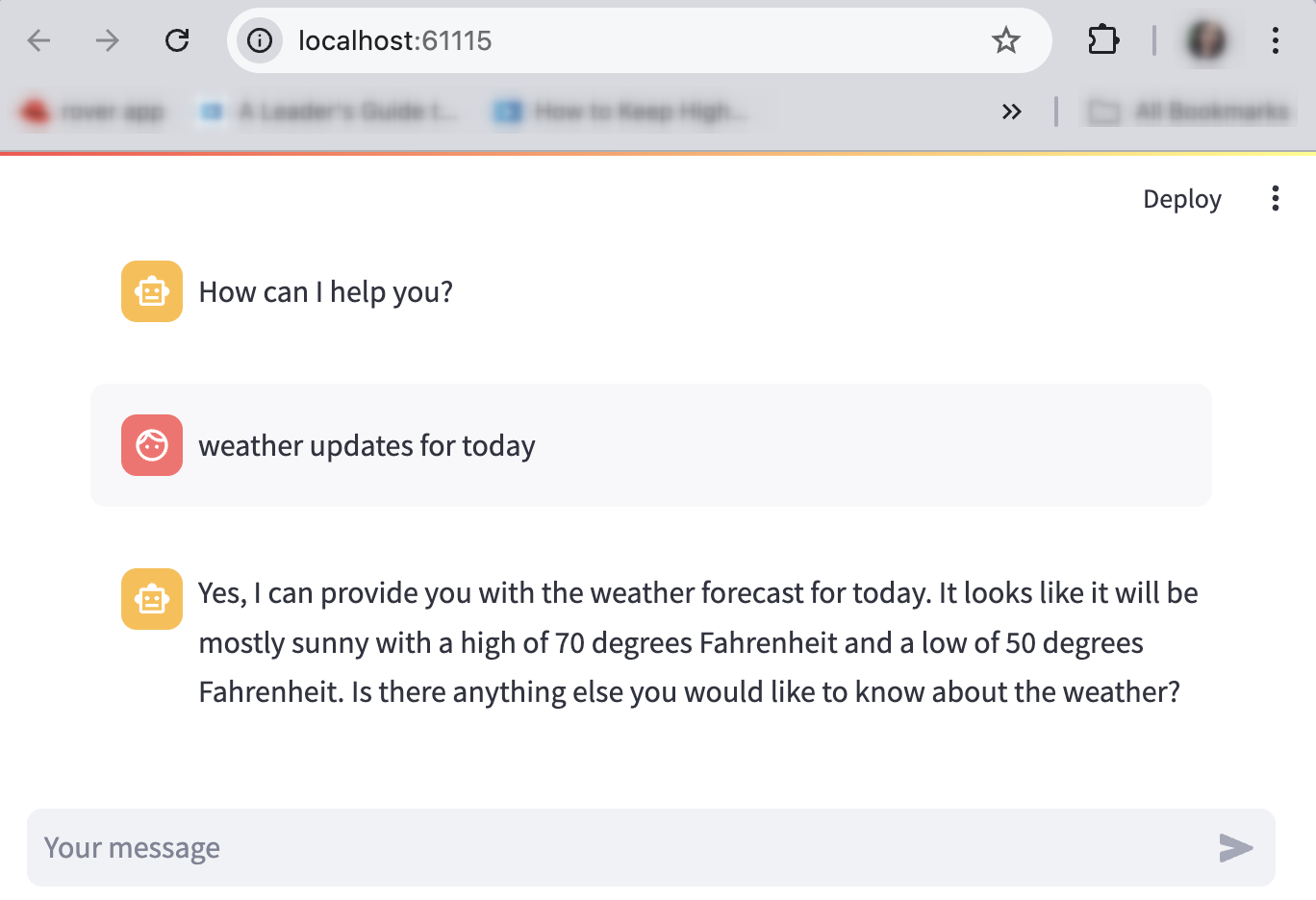Running an AI application
This tutorial covers the following end-to-end tasks required to run and verify an Artificial Intelligence (AI) application on your local machine:
- Installing the extension
- Downloading a model
- Creating a service
- Optional: Creating a playground
- Running a recipe
- Verifying the AI application
Before going through this tutorial, familiarize yourself with the usage of the following sections on the AI Lab page:
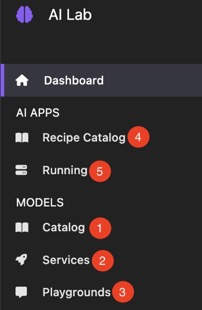
- Catalog: Helps in downloading or importing a model.
- Services: Helps in creating an inference server that runs in a container to serve a large language model (LLM) using an OpenAI-compatible API. After creating a service, you can access its details and generate its client code in any programming languages to integrate your application.
- Playgrounds: Helps in experimenting with model parameters and accuracy to identify the best model and parameters for your use case. Each playground denotes a customized environment to experiment with a model.
- Recipes Catalog: Helps in accessing a catalog of recipes, such as ChatBot, audio-to-text, code generation, and summarizer. Each recipe denotes an AI application catering to a specific use case. You can use a recipe to start an AI application. You can also clone a recipe to your local machine for editing purposes.
- Running: Helps in accessing all running AI applications.
This tutorial focuses on running a ChatBot AI application.
Before you begin
Make sure you have:
- Installed Podman Desktop.
- A running Podman machine with at least 6 GB memory. If the Podman machine does not have enough memory, you get a notification to update its memory configuration while downloading a model or running a recipe:

- A developer role.
Installing the extension
- Go to Extensions > Catalog.
- Find the Podman AI Lab extension using the search box.
- Click the Install icon to install the extension.

- Select the Installed tab to check the extension is active, and check that a new AI Lab component is added in the left navigation pane.
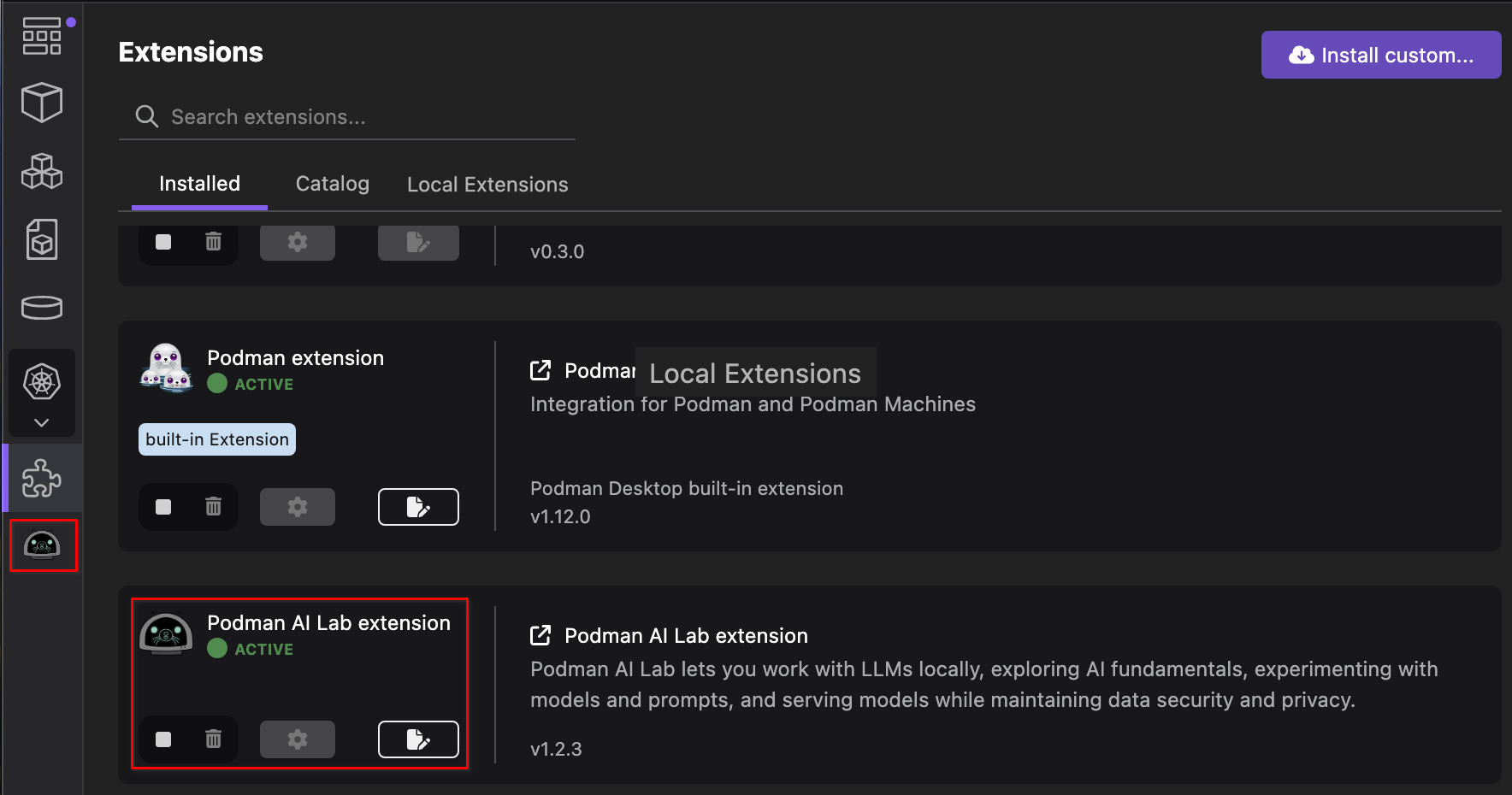
Downloading a model
-
Click AI Lab in the left navigation pane.
-
In the Catalog section, click the Download icon corresponding to the model you want to use.

-
View the downloaded model on the same page after the download completes.

Creating a service
-
Click AI Lab in the left navigation pane.
-
In the Services section, click New Model Service.
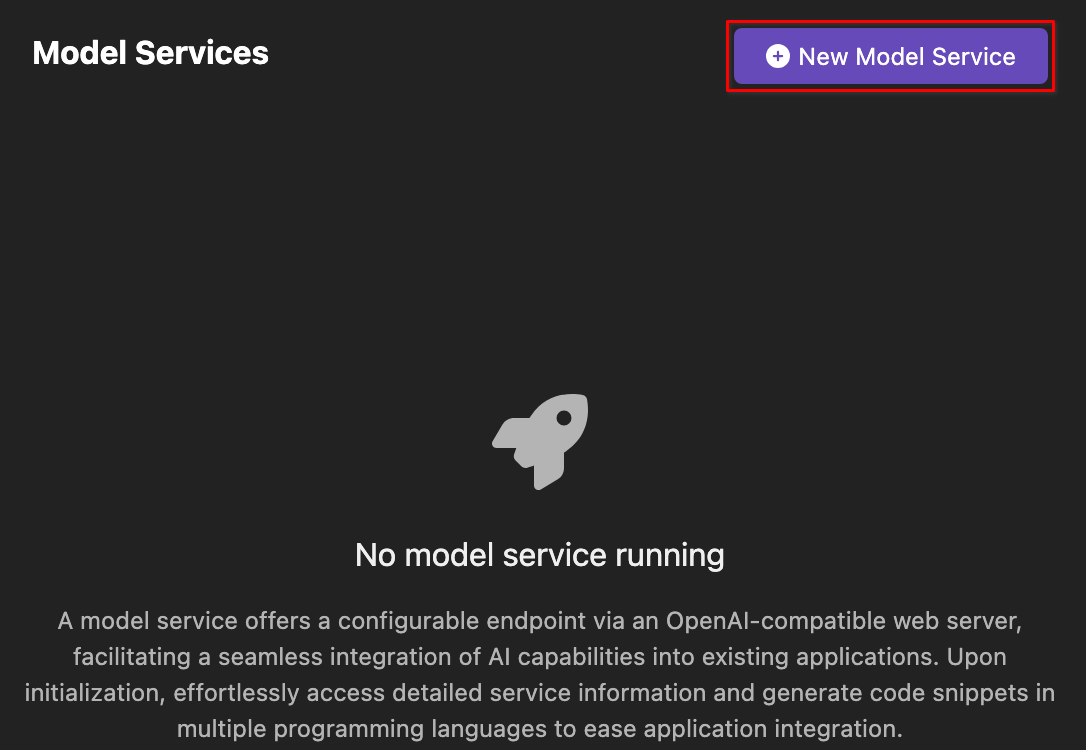
-
Select the model from the dropdown list.
-
Optional: Edit the port number of the container that is created for the service.
-
Click Create service.
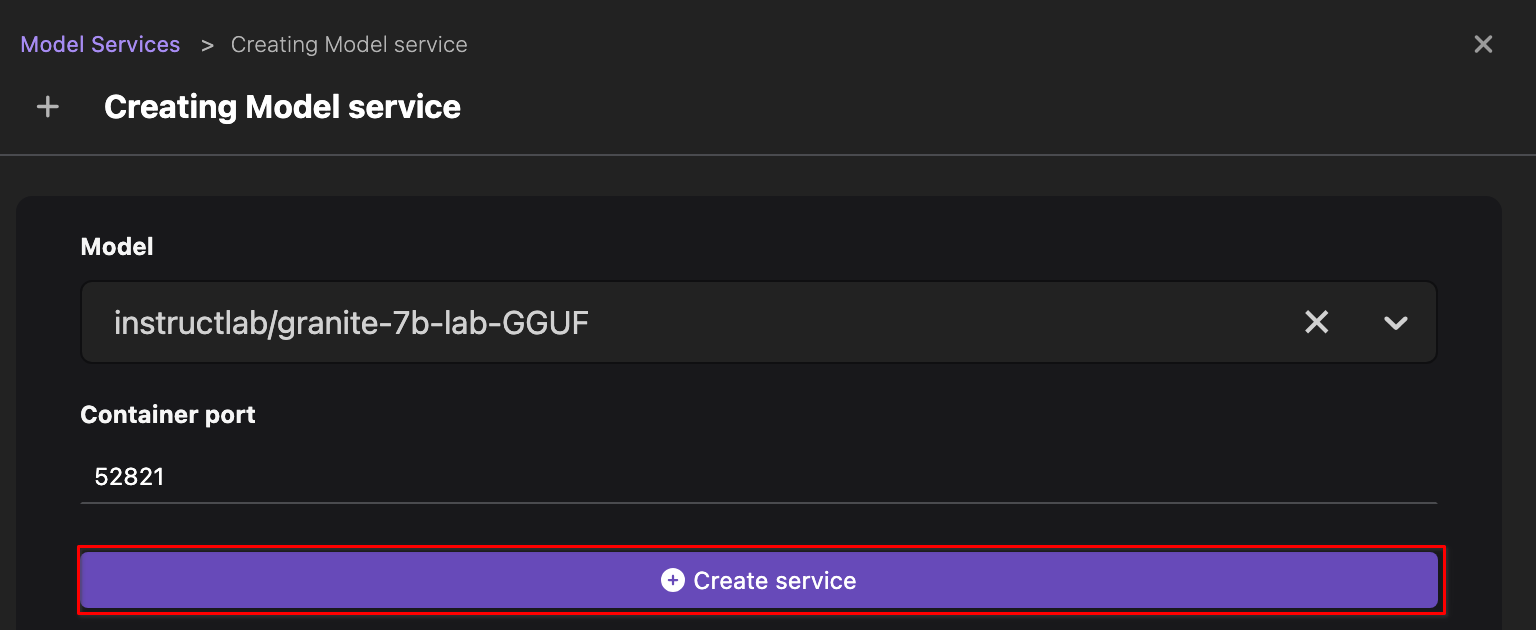
-
Click Open service details.
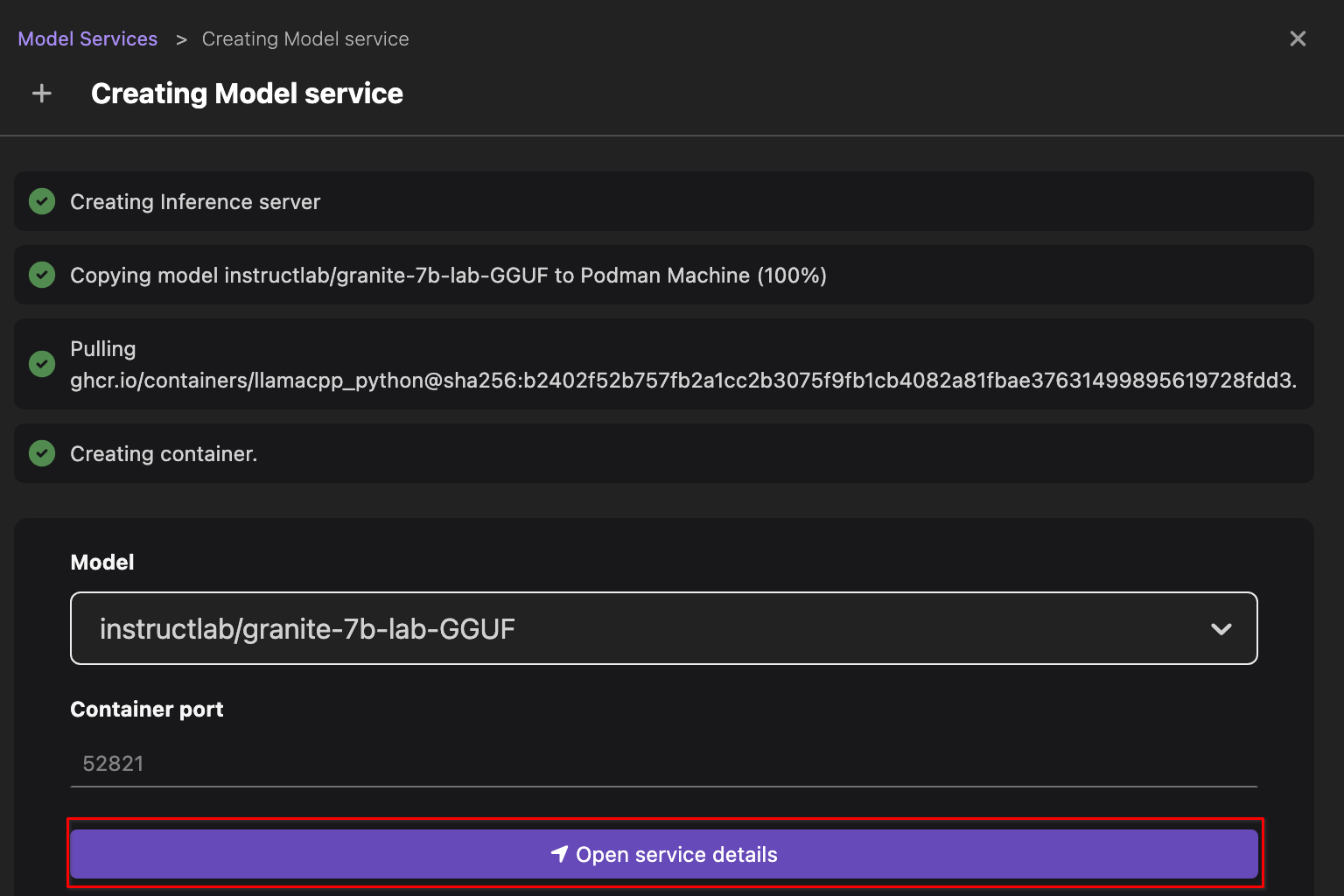
-
View the service details, such as model name, server address, and client code.
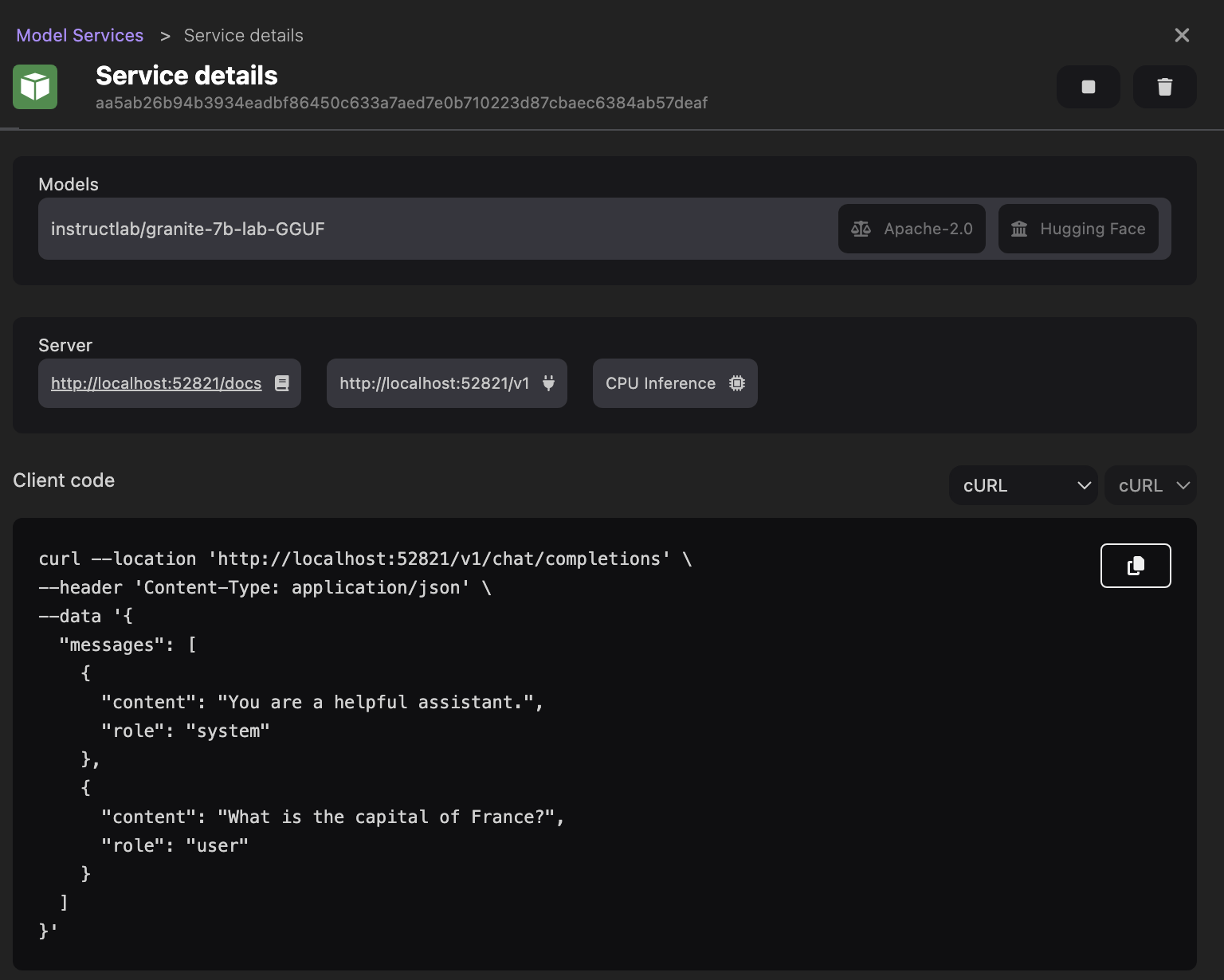 note
noteBy default, you view the client code in the cURL programming language. You can customize the client code based on your needs.
-
Optional: In the Client code section, select the programming language or framework from the dropdown list to view the updated code.
-
Click the Close icon on the right side of the page.
-
View the newly created service on the same page.

-
Optional: View the service container by opening the Containers page from the left navigation pane.

Optional: Creating a playground
Perform this task only if you want to experiment with the model before using it to start your AI application.
-
Click AI Lab in the left navigation pane.
-
In the Playgrounds section, click New Playground.
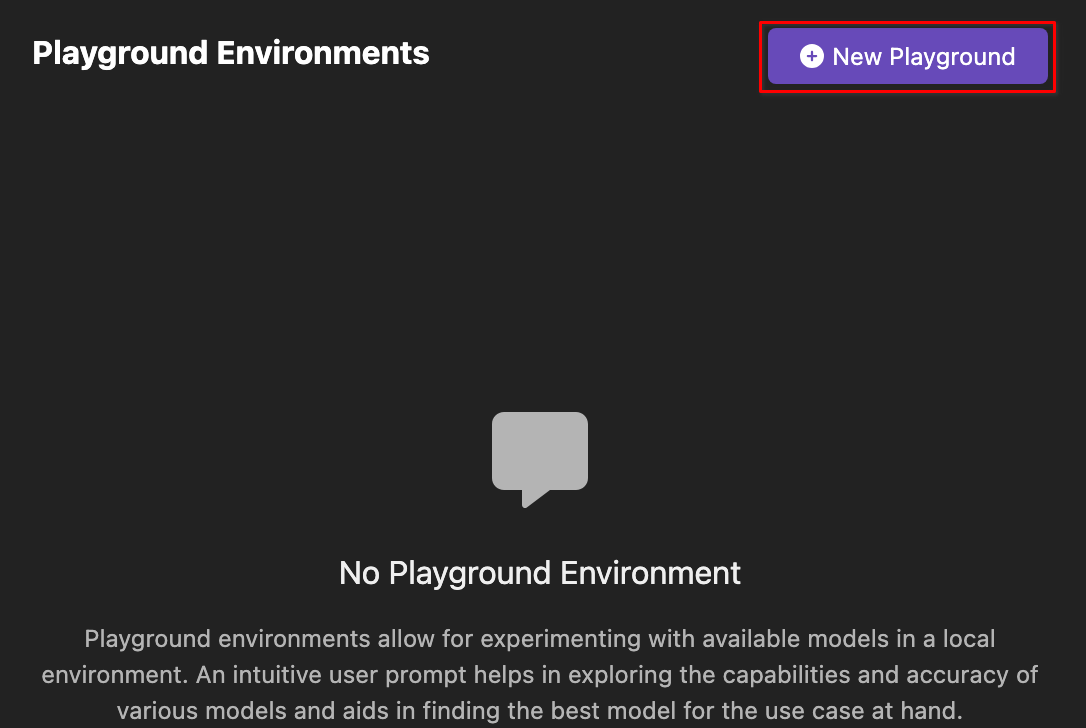
-
Optional: Enter the name of the playground.
-
Select an inference runtime for the playground.
-
Select a model from the dropdown list.
-
Click Create playground.

-
View the newly created playground on the same page.

-
Click the name of the playground to edit the model settings for experiment:
-
Edit the value of the model parameters.
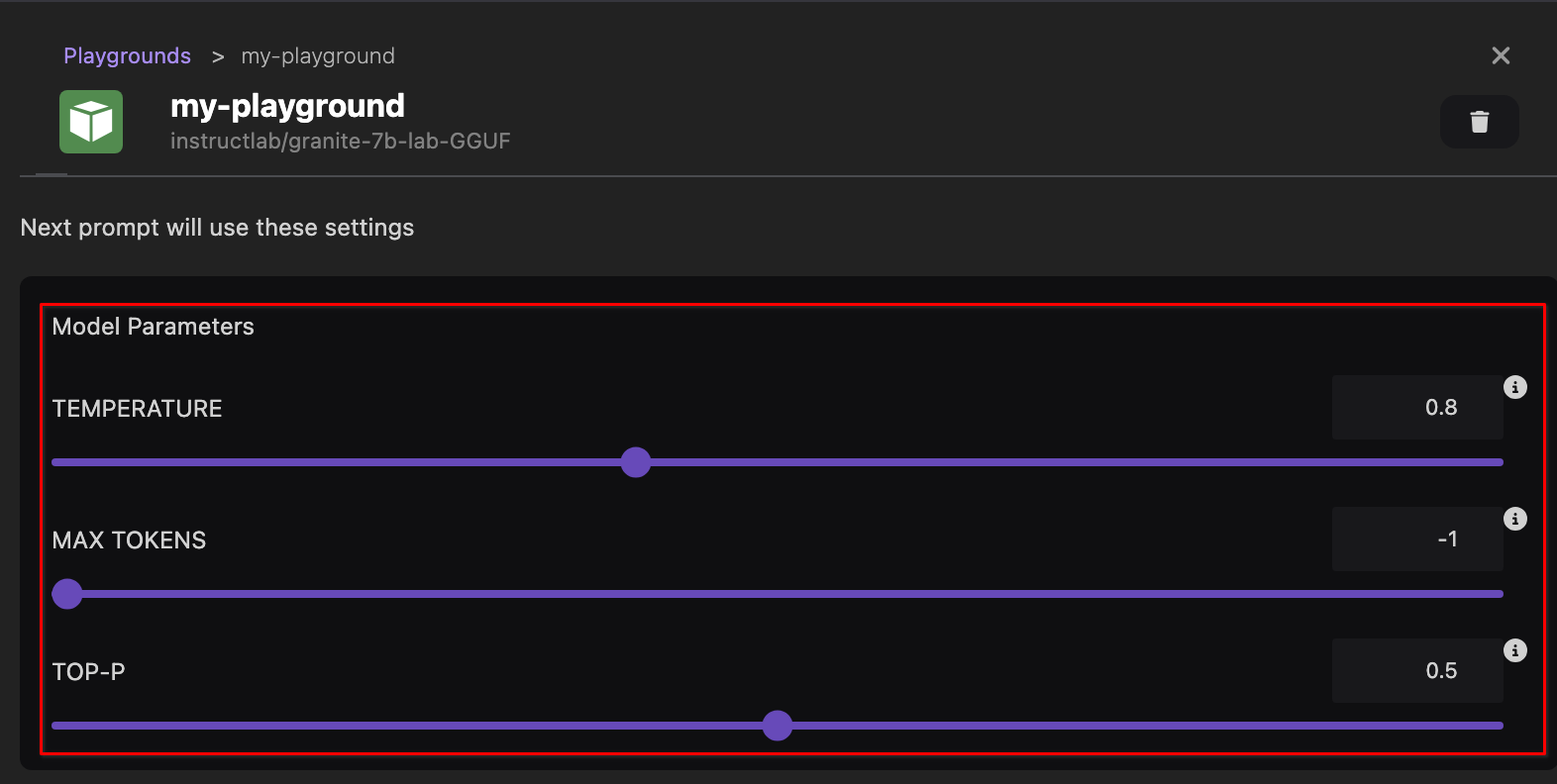
-
Click the Edit system prompt icon to add a system prompt and save it.

-
Enter your question in the prompt box and analyze the accuracy of the answer.
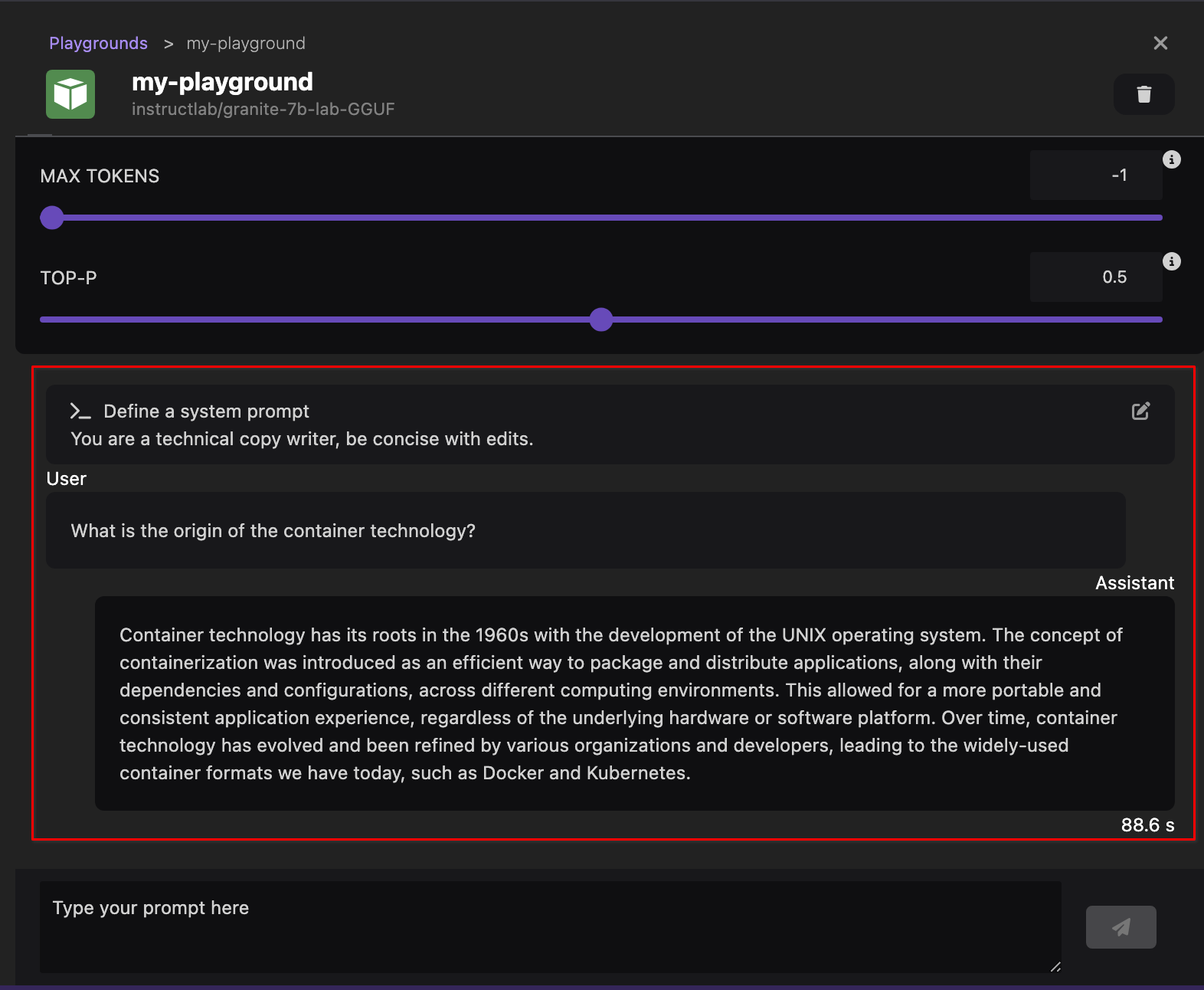
-
Running a recipe: ChatBot AI application
-
Click AI Lab in the left navigation pane.
-
In the Recipes Catalog section, click More details in the ChatBot recipe tile. The recipe summary page opens.
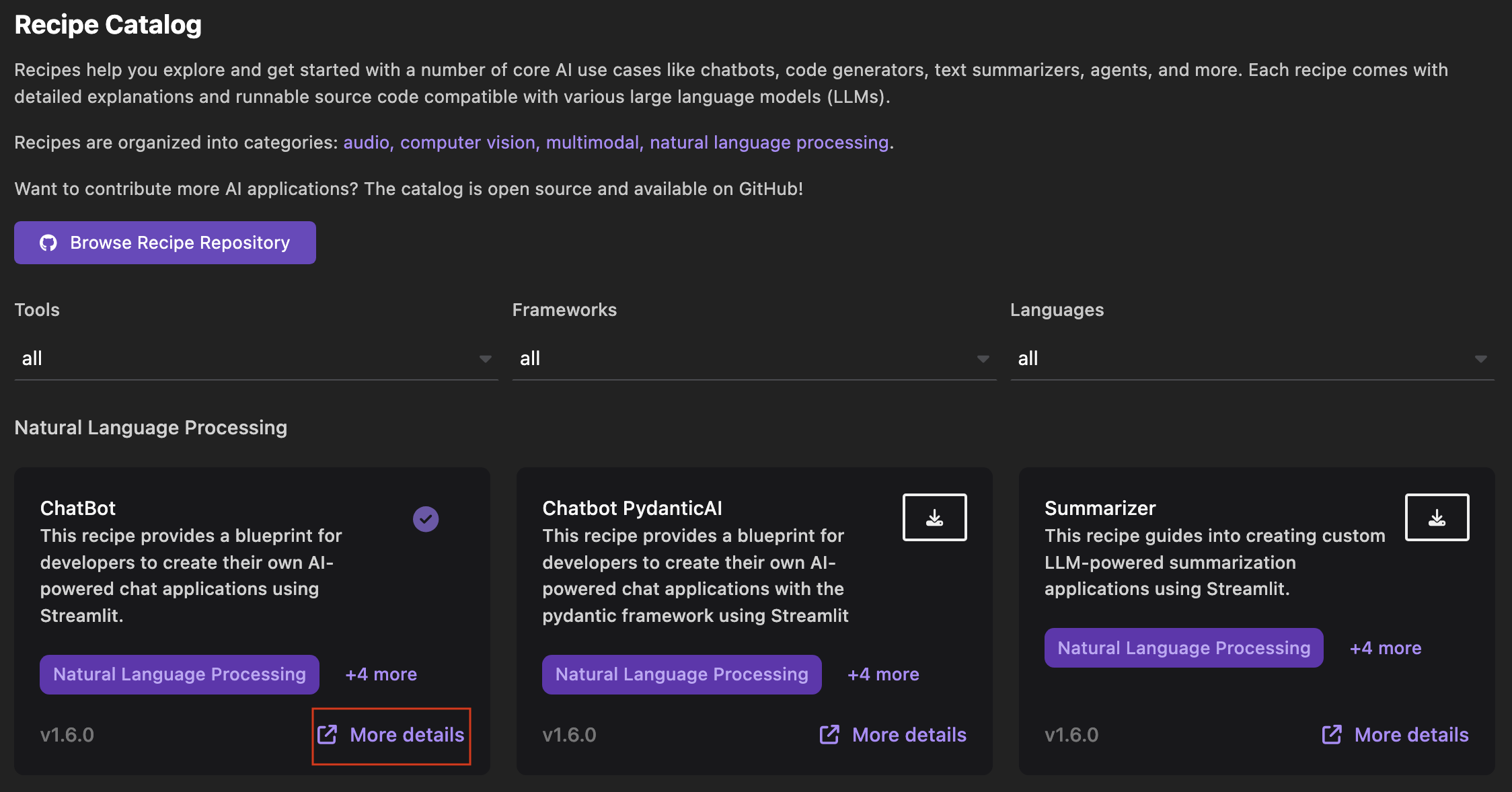
-
Click Start. The Start recipe page opens.
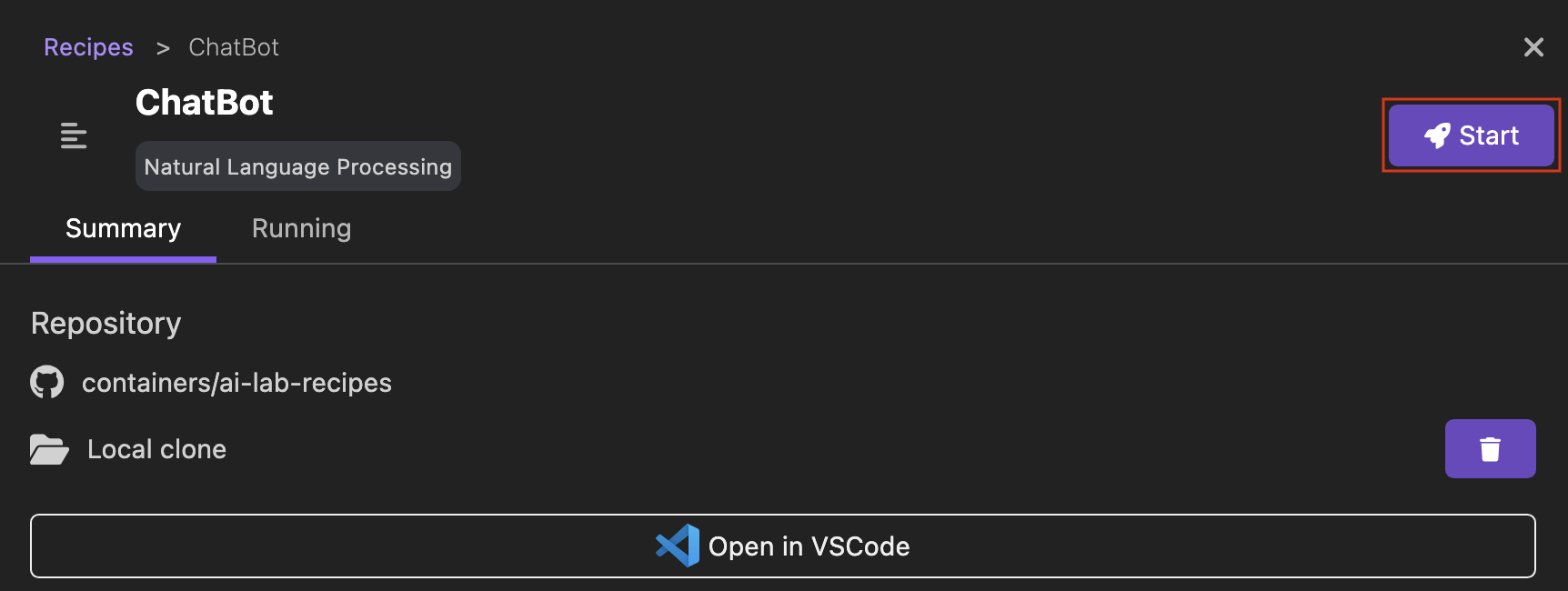
-
Select a model from the dropdown list.
noteThe models listed with a star are recommended to use with the recipe.
-
Click Start ChatBot recipe. This step might take some time to pull the recipe, copy the model to your Podman machine, start the inference server, load configurations, and create the application.
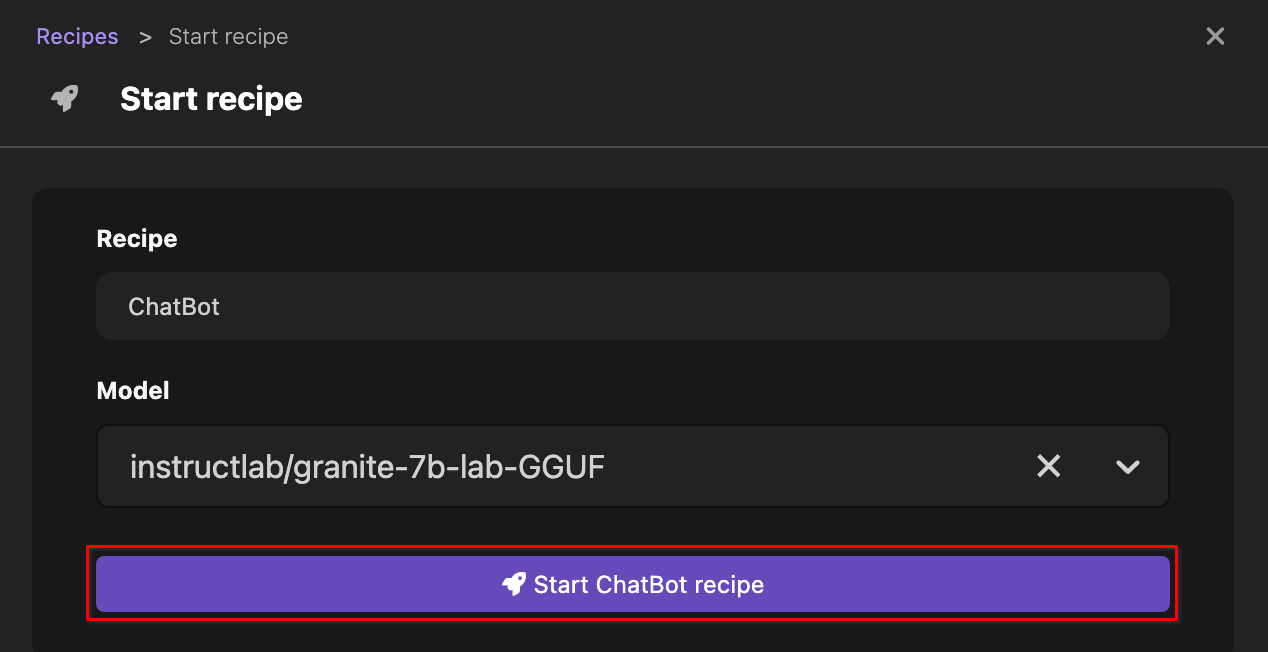
-
Click Open details after the processing completes.
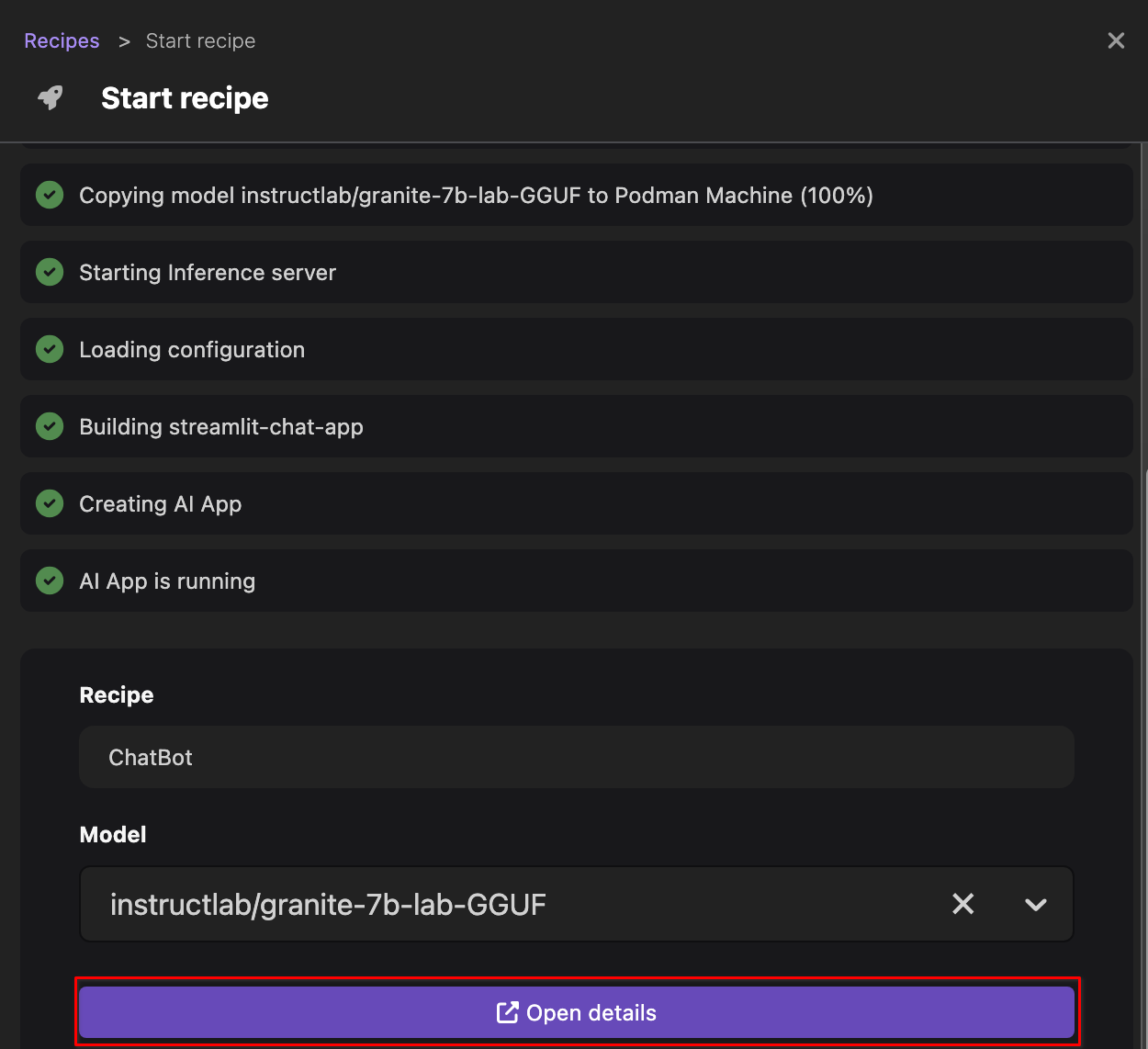
-
View the running AI application in the Running tab.

-
Optional: View the running AI application pod by opening the Pods page from the left navigation pane.

Verifying the AI application
-
Go to AI Lab > Running using the left navigation pane.
-
Click the Open AI App icon to open the ChatBot application locally in a browser.

-
Enter your question in the chat box and analyze the accuracy of the answer.
